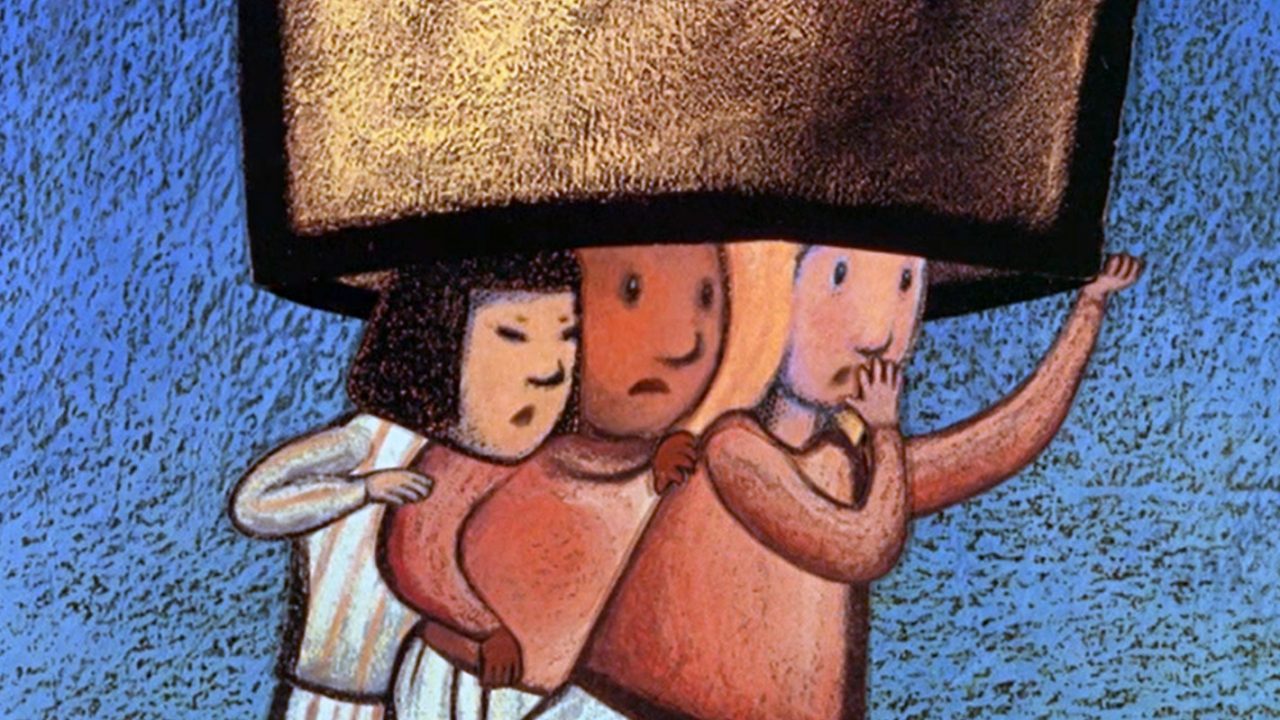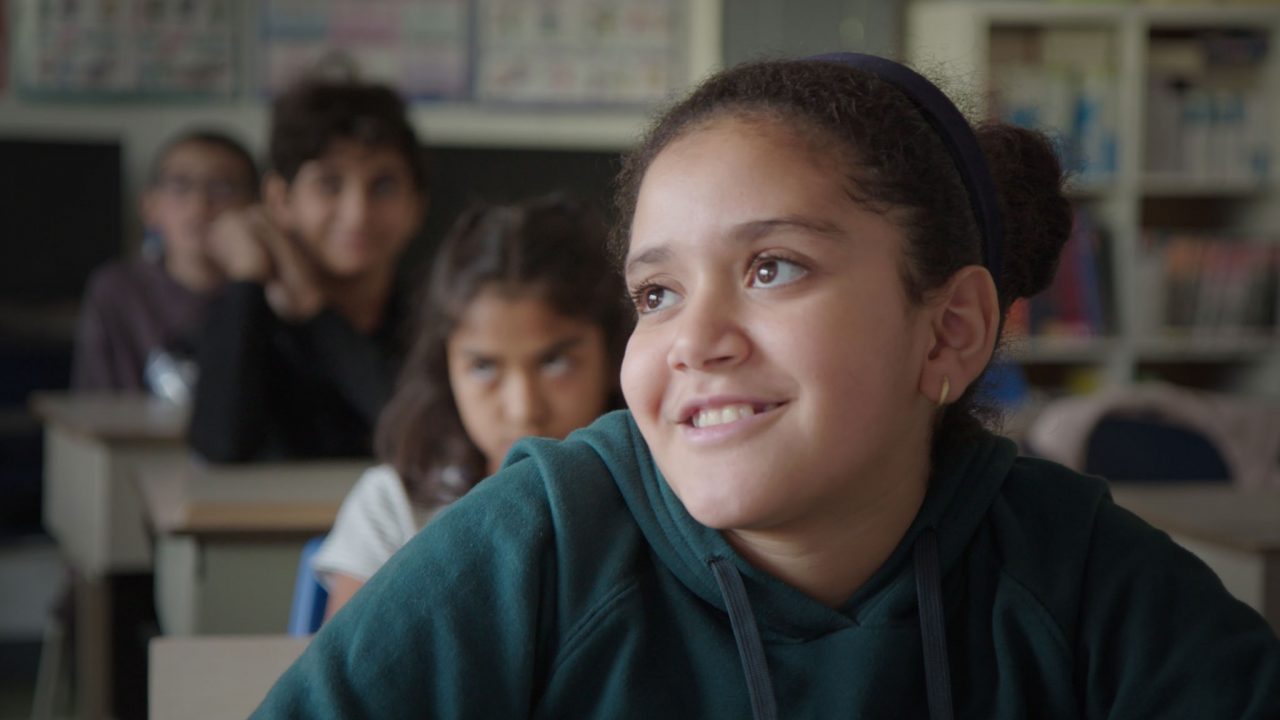
Three Films to Empower Young People for Human Rights Day
Three Films to Empower Young People for Human Rights Day
When the Universal Declaration of Human Rights (UDHR) was proclaimed by the United Nations General Assembly on December 10, 1948, was its significance recognized? The Declaration sent a clear message of dignity, freedom and justice for all. Looking back over 75 years of progress on human rights, we can identify improvements in civil rights, gender equality and freedom of expression. I remember the joy shared worldwide when apartheid ended in South Africa.
There have been improvements in reproductive rights and access to education for women. However, there is still much work to be done to have human rights protected locally and globally. With this 75th-anniversary milestone, we have the opportunity to rejuvenate the Declaration of Human Rights by drawing on three NFB films that invite even our youngest students to think about the impact they can have locally on their environments and communities.
Some of my most memorable moments as an elementary-school teacher have taken place while working on projects with community members, such as with an Anishinaabe outdoor education program, the Community Living group and WWII veterans. There’s something uplifting about seeing students problem-solve and then advocate for others. When students realize they are making a positive change in a real-life issue, they are more engaged and focused. I’ve seen Grade Three to Grade Eight students who initially were hesitant to speak during group work gain enough confidence to participate in school assemblies.
Sometimes, students—and all of us—can feel like the changes needed in the world are so big that only large, well-resourced actions can make a difference. But being involved in these projects showed me how students developing these skills can have a ripple effect and improve human rights at a local level. Studying human rights helps educators work toward the goal of making a better future. Ideally, we want to build knowledge and understanding and then follow through with action.
While high school students certainly have the ability to carry out more complex analysis and projects related to human rights, Hope Builders shows us the remarkable capacity and impact of Grade Six students in Quebec, while the films The Orange and Why? invite younger children to think about how their simple acts of sharing and compassion for one another are also impactful. With older students, it’s possible to address human-rights concerns at a local level and empower students to make a difference.
The Orange, Diane Chartrand, provided by the National Film Board of Canada
At first glance, The Orange is a film that makes human-rights issues very easy for young students to understand. That said, I would still recommend this film for audiences of any age as a minds-on activity. This wordless film tells a touching story that will get our students’ attention and have them ready for a deep discussion on the right to have access to food. In less than five minutes, we see a child at school go from being hungry, sad, unfocused and embarrassed to being playful and energetic. The film will leave your students wondering what simple acts they can do to help others. Your discussion could go further into potential reasons for food insecurity and poverty, and suggestions for making food affordable and available for people in the local community.
Why?, Bretislav Pojar, provided by the National Film Board of Canada
Screening the animated short film Why? will prepare students in Grade Four and up to study the negative impacts of poverty, drought and war on a child’s dreams. We observe that children around the world suffer from inequalities and have their dreams destroyed when their human rights are not a priority. These are children with aspirations for the future, but their hopes are dashed due to war, relocation and natural disasters that take them off the path to success. Why? could launch a unit of study into current or past events in which children have lost their homes, gone hungry or been forced to earn money for their survival. As a nice tie-in for social studies, Canadian students will develop an understanding of the challenges and realities of children in other parts of the world.
Both The Orange and Why? are from a collection of animated short films called Rights from the Heart. There is an educator’s guide to this collection that will help you get into the films at a deeper level, and you may wish to explore other titles from the collection.
Hope Builders, Fernand Dansereau, provided by the National Film Board of Canada
Hope Builders is a film that is as inspirational for educators as it is for students who really want to facilitate positive change in their communities. It is a 90-minute documentary that follows a Grade Six class in Quebec through a local-action research project that they pursue for months. This film highlights the role adults have in creating environments where young people not only have their rights respected, but are also able to contribute meaningfully to their communities.
Right from the beginning, the students are highly motivated to look for issues in their town that they can address. Through class discussions, group work, student/teacher meetings and guest speakers, they formulate a plan to deal with graffiti. The class prepares for a town hall meeting with a budget proposal and a series of student presenters. Watching the way the students interact with each other, their teacher, the public and the mayor, you can see the incredible impact this process is having on their self-confidence and self-esteem. With adult guidance and support, they are thinking critically to solve problems and developing empathy for others. When we see the humanity that each of us shares, there is hope for the future.
By using these three NFB films to celebrate seven and a half decades of the Universal Declaration of Human Rights, educators can inspire a new generation of Canadians to champion human rights as a cornerstone of our diverse and inclusive society.
Brenda MacNaughton is an elementary-school teacher in Ontario and a proud member of the National Film Board’s Educator Network. She enjoys being outdoors and encourages all teachers to get students involved in community action projects because they are so rewarding for everyone involved! Brenda loves to read, write and watch movies with her family.
Pour lire cet article en français, cliquez ici.
Discover more Educational blog posts | Watch educational films on NFB Education | Watch educational playlists on NFB Education | Follow NFB Education on Facebook | Follow NFB Education on Pinterest | Subscribe to the NFB Education Newsletter



